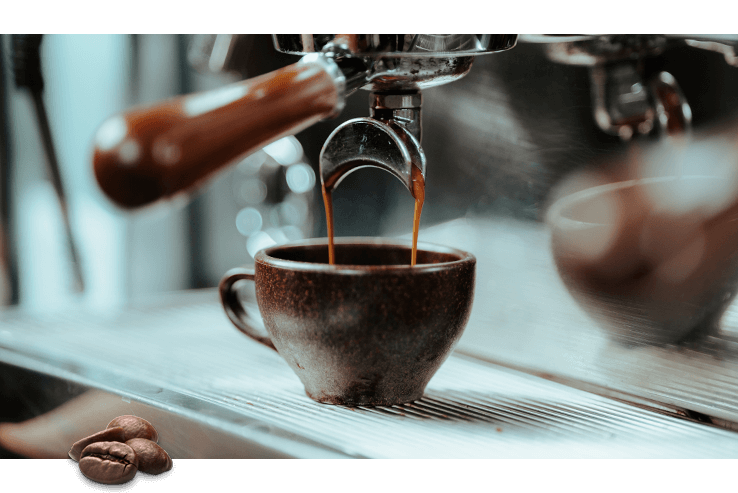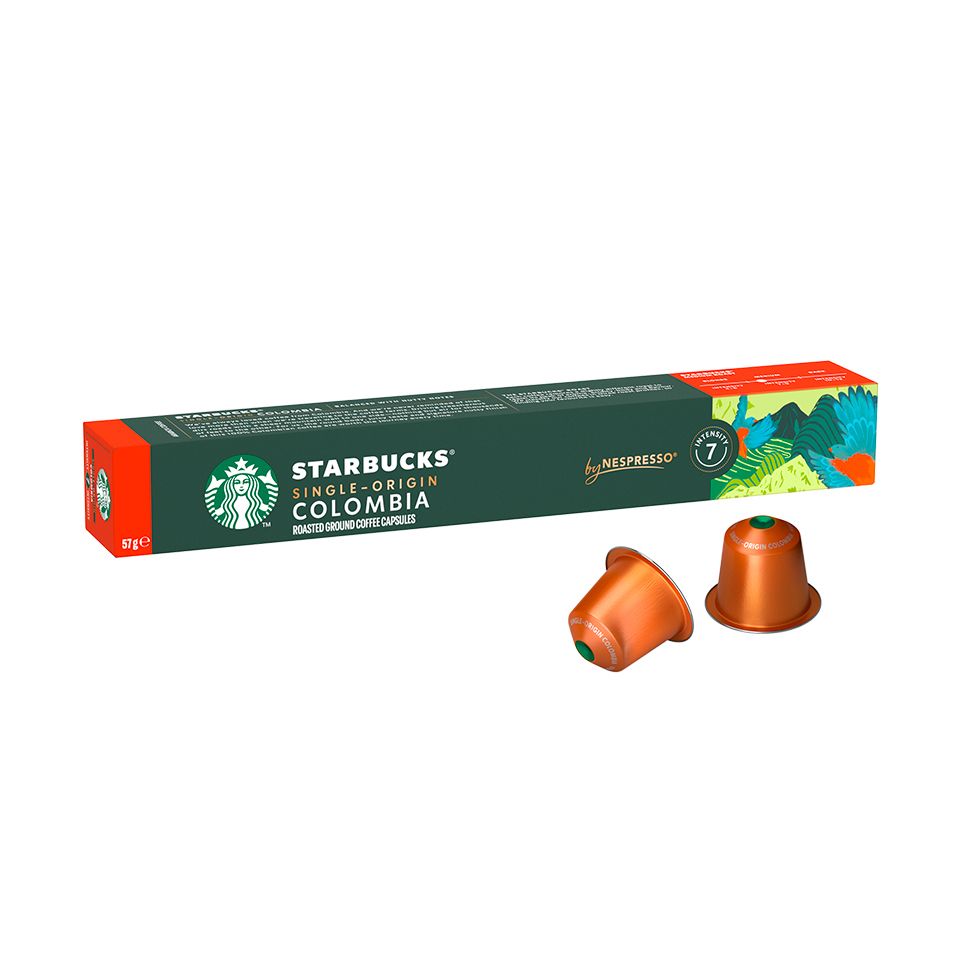Coffee Beans Uncovered: Discovering the Secrets of Espresso and Blended Coffee Beans
When you consider coffee, what comes to mind? Is it the abundant fragrance of espresso or the complexity of a well-crafted mix? Recognizing the subtleties of coffee beans can change your experience. Each variety, from Arabica to Robusta, holds its very own secrets. As you explore further, you'll reveal just how these beans form tastes and influence sustainability. What might you find regarding your following cup?
The Origins of Coffee: A Historical Perspective
Although coffee is now a staple in coffee culture worldwide, its origins trace back to the very early 20th century in Italy. You could be amazed to discover that the development of coffee was driven by a need for speed and performance. In 1901, Luigi Bezzera patented the first espresso maker, intending to make coffee faster than conventional approaches. This development promptly captured the interest of Italian coffee drinkers, leading to the espresso bars we are acquainted with today.
Recognizing Coffee Beans: Selections and Characteristics
When you consider coffee, it's important to identify the different bean selections and their one-of-a-kind flavors. Each kind brings a distinct personality to your mug, affected by factors like roast degrees. Recognizing these components can boost your espresso experience significantly.
Coffee Bean Varieties
As you explore the globe of coffee, you'll quickly uncover that not all beans are produced equal; each range brings its own one-of-a-kind flavors and attributes to your cup. Arabica beans are known for their smooth, nuanced tastes and reduced high levels of caffeine content, making them a favorite amongst coffee connoisseurs. Each range supplies something different, so trying out will assist you discover your perfect coffee.
Taste Profiles Described
Recognizing the taste profiles of different espresso beans can raise your coffee experience. Each bean range provides special qualities that affect mouthfeel, scent, and preference. As an example, Arabica beans frequently present a sweeter, extra complicated flavor with tips of fruit and flower notes, while Robusta beans often tend to be bolder, with earthy and nutty undertones.
When you discover single-origin beans, you might discover unique local tastes-- Central American beans might be citrusy and brilliant, whereas Italian blends usually supply abundant, chocolatey notes.
Roast Levels Impact
Roast degrees play a crucial role in forming the taste and scent of coffee beans, influencing your overall coffee experience. Comprehending these roast degrees helps you select the espresso that fits your preference preferences. Trying out with different roasts can lead to delightful discoveries, enhancing your appreciation for espresso.
The Art of Mixing: What Makes Blended Coffee Distinct
What makes mixed coffee so fascinating? It's everything about the art of integrating beans from various origins, roast levels, and taste profiles. When you mix, you're not just blending; you're developing a harmonious balance that highlights the strengths of each bean. You can trying out numerous combinations to enhance body, sweet taste, and level of acidity, leading to a brew that's richer and extra intricate than a single-origin coffee.
Blending additionally permits you to deal with varied taste choices. You can craft a blend that's smooth and smooth or one that's vibrant and robust, relying on your audience. Plus, blending can assist keep uniformity, offering a trusted flavor experience despite seasonal variations in beans. So, whether you're a home or a barista brewer, understanding the art of blending opens up a world of creative thinking and flavor possibilities, making your coffee experience genuinely special - SOE.
Flavor Accounts: Tasting Notes of Espresso vs. Blended Coffee
Blended coffee uses a world of flavor possibilities, yet when it pertains to espresso, you're looking at a much more concentrated experience. Espresso typically showcases bold, abundant flavors with a thicker mouthfeel. You could notice notes of dark chocolate, caramel, or perhaps tips of fruit, relying on the beans. The strength can be both satisfying and revitalizing.
On the other hand, combined coffee presents a complex tapestry of tastes. You can discover a range of tasting notes, from nutty and wonderful to floral and fruity. Each blend can offer something unique, usually integrating beans from various areas to create a balanced account.
While espresso provides a punch, blended coffee welcomes you to appreciate the nuances. Whether you choose the durable stamina of coffee or the complex flavors of combined coffee, each cup tells its very own tale, waiting on you to find.
Brewing Techniques: Developing Your Coffee Shot
To attain the ideal coffee shot, comprehending the developing strategies is essential, as also small Recommended Site adjustments can greatly affect the taste and top quality. Start by utilizing fresh, top quality coffee beans; grind them prior to developing for maximum flavor. Go for a great grind, concerning the uniformity of salt, to assure ideal extraction.
Following, pay attention to your water temperature level; it ought to be in between 195 ° F to 205 ° F. Too warm or also chilly can destroy your shot. Usage regarding 18-20 grams of coffee for a dual shot, and tamp it equally with strong stress to develop an uniform puck.
A longer removal can lead to bitterness, while too brief can result in sour tastes. Practice these methods consistently, and you'll refine your skills, attaining that abundant, robust espresso shot you yearn for.
The Role of Roast Degrees in Espresso and Blended Coffee
After mastering the brewing methods for coffee, it's time to contemplate just how roast levels affect the taste account of your coffee. The roast level can substantially change your espresso's aroma, preference, and body. Light roasts tend to highlight the coffee's beginning, using brilliant acidity and fruity notes, while medium roasts equilibrium acidity and sweet taste, creating a well-shaped flavor. Dark roasts, on the various other hand, highlight vibrant, abundant tastes with reduced level of acidity, frequently producing chocolate or great smoky undertones.

Discovering Sustainability: Honest Sourcing of Coffee Beans
When you pick coffee, you're not simply selecting a flavor; you're deciding regarding the influence on farmers and the atmosphere. Recognizing Fair Trade methods, chemical-free farming approaches, and certification criteria can assist you support lasting coffee sourcing. Allow's check out just how these factors add to a more moral coffee experience.
Fair Trade Practices
Fair Profession practices play an essential duty in guaranteeing that coffee beans are sourced fairly and sustainably. When you choose Fair Trade coffee, you support farmers that obtain fair incomes and job in safe conditions. By choosing for Fair Trade brands, you're not just taking pleasure in an abundant mug of coffee; you're making a favorable impact on the lives of those that grow it.
Organic Farming Methods
As you explore the globe of ethical coffee sourcing, natural farming approaches become a crucial component of sustainability. By choosing natural coffee, you support methods that prioritize dirt health and wellness, biodiversity, and natural ecosystems. Farmers prevent artificial pesticides and plant foods, relying rather on all-natural garden compost and crop rotation to enhance dirt fertility. This not only protects the setting however likewise boosts the high quality of the coffee you appreciate. Organic farming urges regional wild animals and advertises a balanced ecosystem, this website reducing the chances of illness and bugs. Additionally, it typically brings about more powerful, much healthier coffee plants, resulting in richer flavors in your mug. When you select natural coffee, you're making a conscious choice that benefits both the planet and your taste buds.
Accreditation Requirements Explained
Comprehending accreditation standards is important for anybody thinking about ethically sourced coffee. These requirements, such as Fair Trade, Rainforest Alliance, and USDA Organic, guarantee that coffee is grown under sustainable techniques. You support farmers that stick to honest labor practices and environmental security. when you pick licensed coffee.
Fair Profession certification focuses on providing fair incomes and functioning conditions, while Rainforest Alliance stresses biodiversity and environment conservation. USDA Organic assures that no synthetic fertilizers or pesticides are utilized. By acquainting yourself with these certifications, you can make educated selections that line up with your values. Following time you go to your regional coffee shop or grocery store, seek these labels, and feel excellent understanding your coffee acquisition favorably affects neighborhoods and the environment.
Regularly Asked Inquiries


Just How Does Elevation Affect the Development of Coffee Beans?
Elevation effects coffee bean development by affecting temperature level and climate. Greater elevations usually produce denser beans with even more complex flavors, while lower altitudes can lead to faster growth yet less flavorful results. You'll taste the difference!
What's the Distinction In Between Arabica and Robusta Beans?
Arabica beans are sweeter and much more intricate, while Robusta beans have a stronger, harsher taste with higher high levels of caffeine material. You'll find Arabica favored for specialty coffees, whereas Robusta's usually used in instantaneous coffee and coffee blends.
Can Coffee Beans Spoil or Shed Flavor In Time?
Yes, coffee beans can go negative and shed taste with time. If you keep them improperly or keep them also long, they'll wither. Always maintain your beans in an airtight container far from light and dampness.
What Are the Health Conveniences of Alcohol Consumption Coffee?
Consuming espresso increases your energy, improves mental quality, and might lower the risk of specific conditions. It's rich in antioxidants, sustains metabolic rate, and can enhance mood, making it a beneficial option for your daily regimen.
Exactly How Does Water High Quality Influence Coffee Removal?
Water high quality substantially influences coffee removal. It influences the solubility of oils and tastes, influencing taste and scent. Using filtered water can enhance your espresso, guaranteeing a delightful and well balanced mug every time you make.
Coffee Beans Uncovered: Uncovering the Tricks of Espresso and Blended Coffee Beans.
Comprehending the taste accounts of various coffee beans can raise your coffee experience.Roast degrees play a necessary role in shaping the flavor and aroma of espresso beans, influencing your general coffee experience (SOE).Combined coffee provides a world of flavor possibilities, yet when it comes to coffee, you're looking at an extra focused experience.After grasping the brewing strategies for espresso, it's time to ponder how roast levels influence the taste profile of your coffee